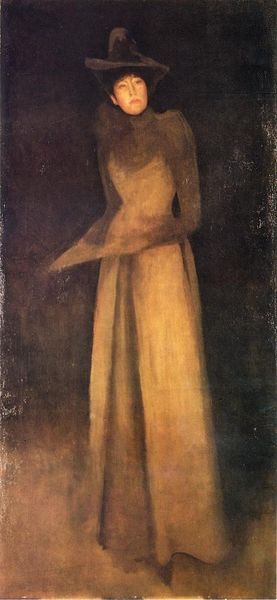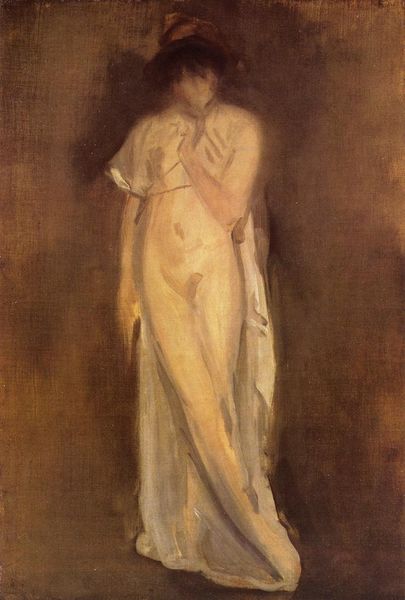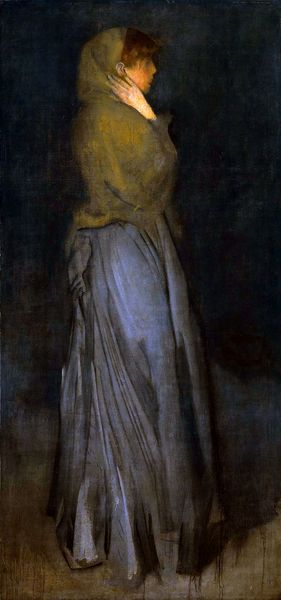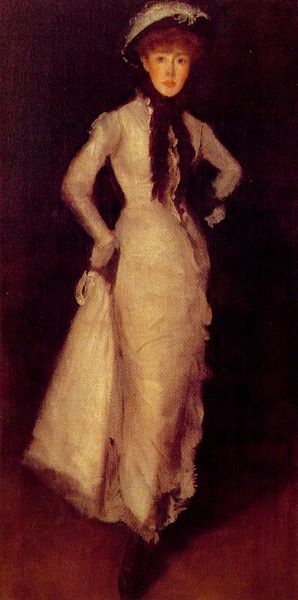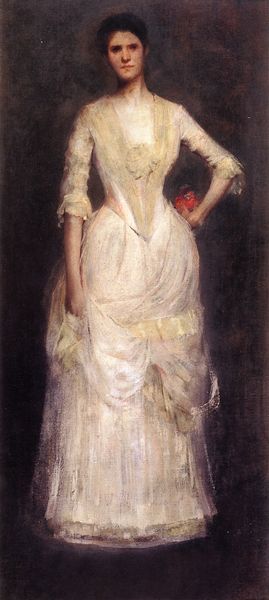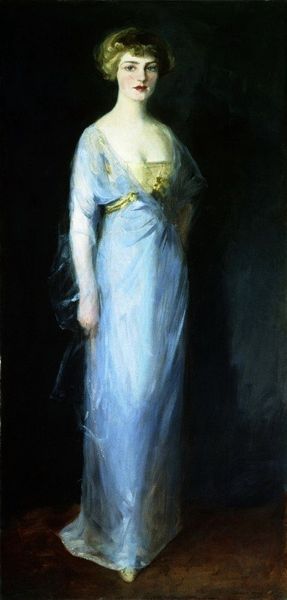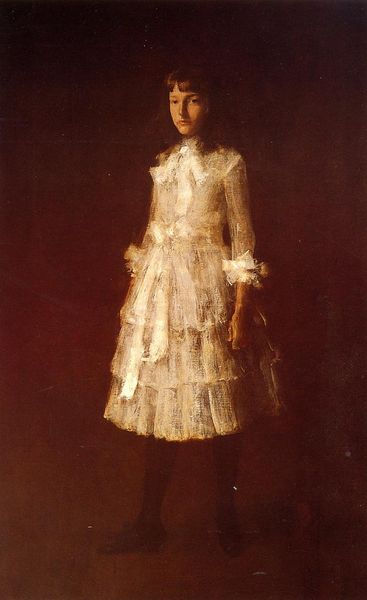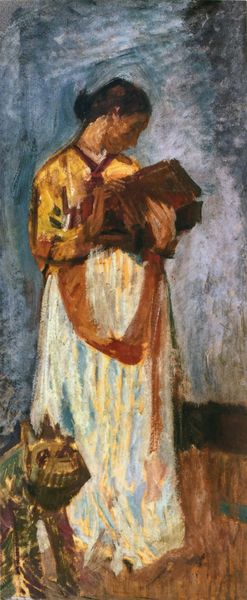
painting, oil-paint
#
portrait
#
painting
#
impressionism
#
oil-paint
#
oil painting
#
orientalism
#
realism
Dimensions: 45.72 x 20.32 cm
Copyright: Public domain
Editor: Here we have William Merritt Chase's "Study of an Arab Girl" from 1888, rendered in oil paint. The brushstrokes give a sense of movement to the flowing white fabric. What strikes me is how the clothing almost obscures the figure. What do you make of this artwork? Curator: I see an engagement with both material culture and the labor of representation. The exoticizing title positions the girl as an object of study, commodifying her image within an Orientalist framework. The loose brushwork is crucial; it’s not just stylistic. It speaks to the speed and presumed ease of production, obscuring the actual labor involved. Think of the artist sourcing pigments, preparing the canvas... Editor: So, the visible brushstrokes draw attention to the *act* of painting, not just the subject? Curator: Exactly. Consider the economic context. Who could afford such a painting, and what did owning it signify about their position within a social hierarchy? The material itself – oil paint – was becoming more widely available, changing the dynamic between artist and patron. Does that change the function of portraiture? Editor: That's fascinating! It makes me think about the accessibility of art-making itself, and how the materials used contribute to its meaning, it adds to the discussion of Orientalism too! It's more than just an image, it’s the result of a series of material choices and power dynamics. Curator: Precisely. This lens moves beyond the purely aesthetic, grounding the work in its material and social realities, which has shaped my understanding entirely.
Comments
No comments
Be the first to comment and join the conversation on the ultimate creative platform.

